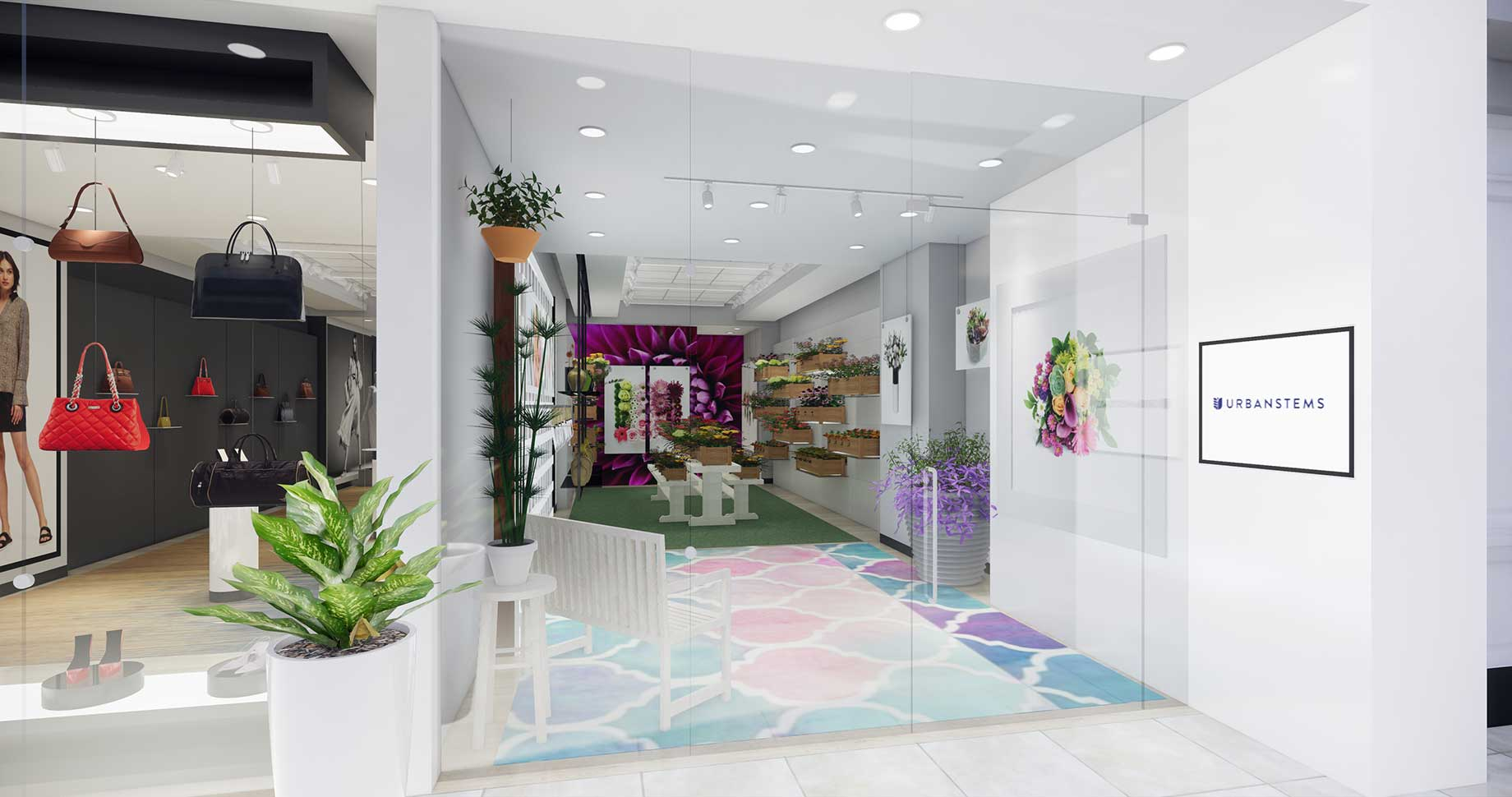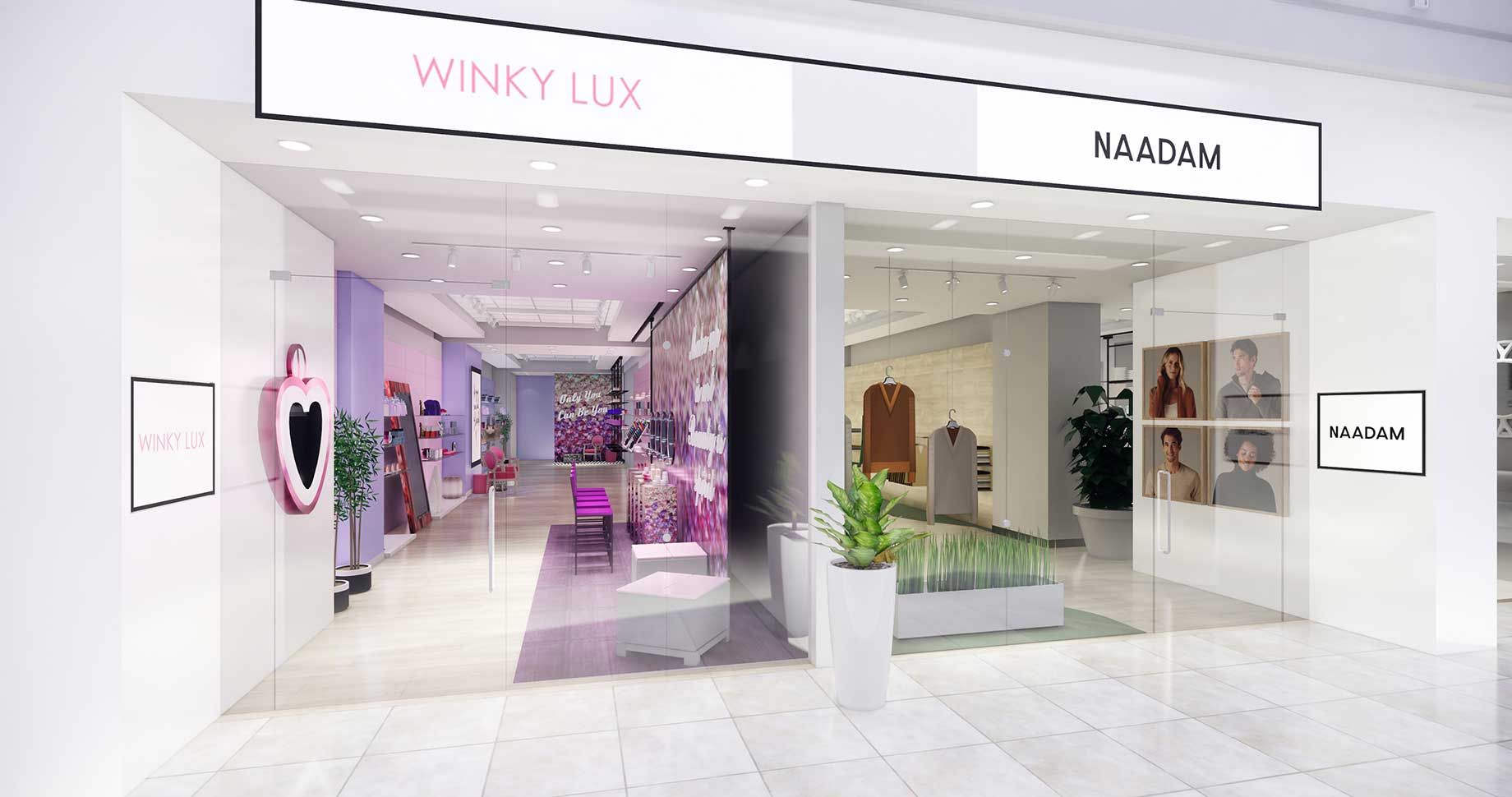“From Pixel to Physical” is the slogan that mall owner Macerich is using for its Brandbox program to help online retailers test out physical spaces in its malls. Brandbox formally opened today in Macerich’s Tysons Corner (Va.) Center mall.
The BrandBox space at Tysons includes 11,000 square feet in a former Z Gallerie inline store, with six initial brands — Naadam, Winky Lux, Interior Define, Nectar, UrbanStems and DKNY — occupying 1,500 square feet each, while 2,000 square feet is dedicated to back of house space for inventory and staff. Since it leased out the initial space, Macerich plans to double its size by summer 2019.
Led by Kevin McKenzie, executive vice president and chief digital officer, BrandBox is targeting companies that have created their online presence within the last three years and have revenue of between $15 million and $200 million. They also typically have a massive Instagram following, but no physical retail presence. Also on the target list are “heritage” brands such as DKNY that do not have stores of their own, but rather have traditionally been in department stores.

A physical store allows Urban Stems' customers to smell the flowers
“It is not a pop up, it fully emulates an inline store and to the consumer it will be no different than when they go into a GAP inline store,” said McKenzie. “That is the big difference between us and some of the other concepts out there.
The initial tenants are eager to put the physical concept to the test. “With our physical space we are looking forward to connecting directly with our customers.” said Ajay Kori, co-founder of Washington, D.C.-based UrbanStems.
For Naadam, a luxury ready-to-wear brand that specializes in rare cashmere, this marks its third foray into the physical realm. “While Naadam lived exclusively online for our first few years, we have seen firsthand the importance of physical retail with the opening of two stores this year,” said Matt Scanlan, CEO and co-founder. “Opening and operating stores in multiple cities is challenging, particularly for young brands. Partnering with BrandBox to enter the DC market has really streamlined the laborious process of creating a storefront that truly encapsulates our brand ethos.”
Macerich plans to roll out the BrandBox program in 2019 at Fashion District Philadelphia; Santa Monica (Calif.) Place; Scottsdale (Ariz.) Fashion Square; The Shops at North Bridge, Chicago; The Village at Corte Madera (Calif.); and Washington Square, Portland, Ore.

Cosmetics brand Winky Lux and luxury apparel merchant Naadam
“For the digitally native brands, this is a way for them to test the major markets that we are in, and they are all learning about what a trade market is and the difference between that and an audience on Facebook,” said McKenzie. “These are markets that overlap with the markets they are already serving really nicely, so it is a very data driven approach on why we selected these markets.”
According to McKenzie, the idea came from Macerich CEO Art Coppola. McKenzie joined the company about a year and a half ago after most recently helping Westfield launch its Westfield Labs program. “It really started with conversations with him and our own mutual passion for technology and real estate, and I joined to formalize what he had been doing for awhile,” said McKenzie.
Starting a retail business these days often begins with an online operation, McKenzie acknowledges. “Our early hypothesis was any brand that is in categories like apparel, home goods, beauty, fashion, and shoes is probably going to start online first, before they are going to build a physical store. If you were an entrepreneur and you had a really good idea for a new brand you would probably build an ecommerce for your brand, learn a lot through testing and iterating and data and analytics and knowing your supply chain and knowing your customer.”
McKenzie’s team studied 500 digitally native brands, and interviewed 50 of their founders. “The feedback derived over six months of analysis was they all want to open stores. They believe that they can’t just live off of acquiring customers through digital channels like Instagram and Facebook and Google. At some point in their maturity they are going to need to open a store. The challenge was finding the funding and the knowledge about the real estate to do so. We have been doing this for over 50 years, so we wanted to take our knowledge, combine it with technology and make this really simple,” said McKenzie.
The BrandBox program includes flexible leases with terms of only six to 12 months, personal support for design and buildout tailored to their brand, marketing support to drive foot traffic to their store, and offline analytics that are comparable to what they can achieve via online metrics.
Collecting and sharing data will be a key ingredient in the program, says McKenzie, offering them similar information that they are used to getting from their online visitors, such as click-rates. “The data that we give them as a part of BrandBox is so critical,” he said, and includes such information as the number of shoppers walking by and entering; how many store visitors cluster around particular items; and the zip codes of their customers, all of which will be on a BrandBox.com dashboard.
So how will Macerich measure the success of the BrandBox program? “In normal circumstances we probably would roll one out and take a year or so and say okay, how is it going, but the demand is so great that we are already announcing multiple locations and expansion, so it tells you we are pretty excited about this,” McKenzie said. A measure of the program’s success will be the number of brands that go on to become permanent tenants, he added.
McKenzie said the company will use the upcoming holiday season as a test of the program to determine a more definitive schedule for rolling out the concept to other Macerich malls. “We are going to learn a lot, this is version 1.0, but between now and 2020 we are pretty excited to roll out many of these in our major markets.”
By Ben Johnson
Contributor, Commerce + Communities Today


